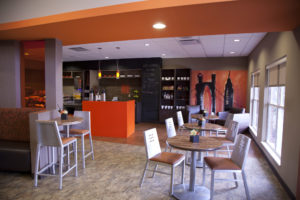 Although life’s transitions can be challenging, each one brings the chance for new opportunities and experiences. One such transition, retirement, is something that nearly 10,000 Americans reach each day. With retirement, aging adults face decisions regarding their future lives and lifestyles, including important decisions about their living arrangements. While many have the ability and desire to keep up with the responsibilities of home ownership, most seniors eventually face a choice regarding arrangements for care in their elder years. The rapidly-evolving world of senior housing brings with it new designs, amenities, and features that can truly enhance one’s retirement years.
Although life’s transitions can be challenging, each one brings the chance for new opportunities and experiences. One such transition, retirement, is something that nearly 10,000 Americans reach each day. With retirement, aging adults face decisions regarding their future lives and lifestyles, including important decisions about their living arrangements. While many have the ability and desire to keep up with the responsibilities of home ownership, most seniors eventually face a choice regarding arrangements for care in their elder years. The rapidly-evolving world of senior housing brings with it new designs, amenities, and features that can truly enhance one’s retirement years.
Throughout the various levels of care, a consistent feature among well-designed facilities is rather simple, yet extremely important; senior housing should be designed specifically for aging adults and elders. A key component of such design is the focus on the unique challenges that seniors face and addressing or overcoming such issues in the built environment. Great care and attention are given to creating spaces that not only make one feel welcome and at home, but also truly enhance one’s independence, safety, and sense of security. For example, lounges, activity, and dining spaces are developed to promote relationships and camaraderie among residents. Furniture and finishes are selected for their residential aesthetic and appeal but also to aid with way-finding and establish destination points for residents. When fully engaged in their environments, seniors often find an enhanced social life in retirements facilities and enjoy conversation with peers, neighbors, and visiting family and friends.

For more information about Transitions in Aging,
contact Susan at s.hinz@andrewsarchitects.com
